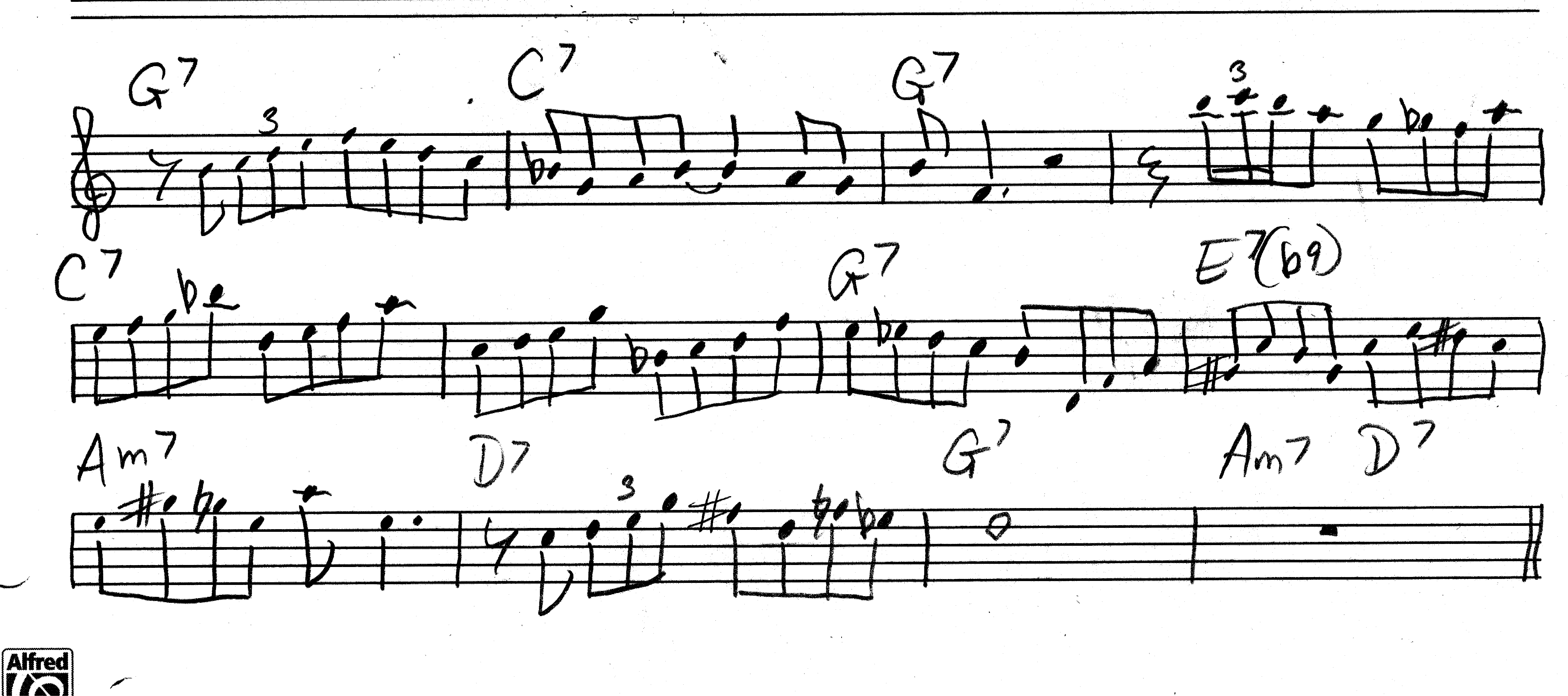Howdy, campers. As promised, I’m back with a few exercises on sequences that you can actually wrap your fingers around.
Before you proceed further, please take a moment to read my introductory post on this topic, written a couple days ago.
And now, assuming that you’ve done as I requested and acquired a foundational grasp of what sequence is and why it’s such a handy tool for the jazz musician, here’s the first exercise. It illustrates the concept of diatonic sequence. The sequence happens to move up by thirds starting on the chord tones of a C major 7, but it could just as easily move up or down by seconds, or fourths, or up and down at random intervals.

You could use the same pattern over a C7 by changing the note B to a Bb. But my point isn’t to show you how to outline a chord. It’s to demonstrate how the use of diatonic sequence provides a sense of logic and cohesiveness which you can use to advantage in improvising a jazz solo.
Sequence does such a good job at “making sense” of an idea that you don’t even have to play in key to sound good. In fact, “wrong notes” can sound very cool when you play them as part of a sequence. The temporary harmonic clash creates color and interest.
Sequentially mirroring an idea exactly, interval for interval, is one way to quickly slip out of key, letting the weight of the sequence rather than harmonic agreement justify the use of individually questionable tones. In the following example, root movement descends by major thirds.
Notice that the idea resolves to a chord tone. It’s cool to take your listeners for a temporary excursion into outer space, but you generally want to bring them back to planet earth again with a healthy dose of consonance.

Again, the movement downward by major thirds is just one possibility.
You can add further interest by shifting the rhythm of a sequence. The following shows the same sequence as above, but the six-note pattern is now imposed on a 4/4 setting rather than 3/4. I’ve marked the separations between each group of notes in the sequence.

Note that I’ve used the sequence over a different chord, an F#+7(#9), another nice application for the augmented sound implied by the major third root movement.
Finally, here is a twelve-bar blues to illustrate the use of sequence in an actual jazz solo. The ideas may seem a bit forced, but they give you a feel for how both diatonic sequence and exact repetition might be applied in an improvisation.

The above illustrations just touch on the myriad creative and highly personal ways that sequence can be used in jazz solos. To recap: sequence can help you organize musical material in a way that creates cohesiveness and momentum, and that gives “wrong notes” a powerful sense of rightness when you want to play outside the changes.
Like any other component of music, sequence needs to be used judiciously. The right amount adds spice; too much just sounds overdone and even boring. Listen to how the greats of jazz use sequence, work with it yourself, take risks, and let your ear be the judge. And need I say…have fun!

